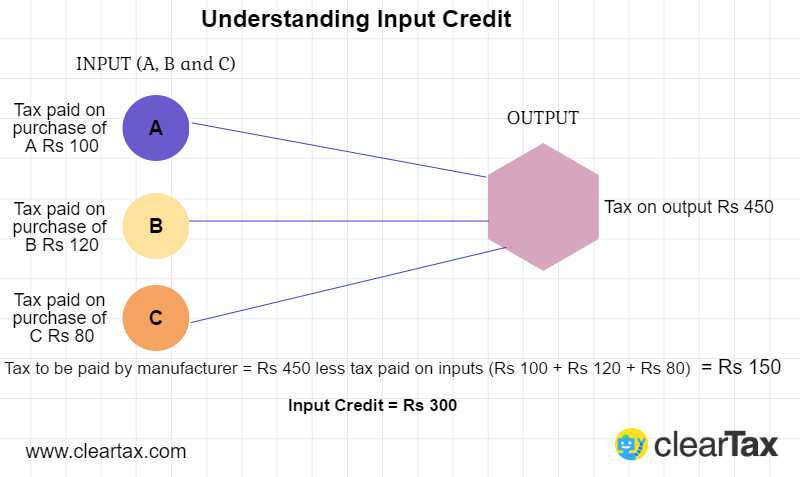GST rollout: What is Input Credit? Here's what you need to know about it

Goods and Service Tax (GST) will soon be a reality from July 1, 2017. As the rollout date nears, the concept and the tax structure is important to understand.
The new tax regime, or GST apart from the companies, it is expected to benefit consumers and manufacturers too. Here's how.
To understand how it will reduce burden, it is important to understand the term "Input credit".
ALSO READ: GST: Tax rates that other countries charge
What is Input credit?
Input credit means at the time of paying tax on output, you can reduce the tax you have already paid on inputs.
Input Credit Mechanism is available to you when you are covered under the GST Act.
Which means if you are a manufacturer, supplier, agent, e-commerce operator, registered under GST, you are eligible to claim input credit for tax paid by you on your purchases.
According to ClearTax, when you buy a product/service from a registered dealer you pay taxes on purchase, while making sales, tax is collected and periodically the same is adjusted with the tax you already paid at time of purchase and balance liability of tax (tax on sales (minus) tax on purchase) is to be paid to the government.
This mechanism is called utilisation of input tax credit(tax on purchase adjustment against tax liability on output i.e. sales).
ALSO READ: GST rollout: All you need to know about monthly, quarterly, annually tax return filing
Explaining the term with an example, Archit Gupta, Founder & ClearTax.com, said, "Say, you are a manufacturer. The final tax payable on your output (FINAL PRODUCT) is Rs 450, while you have already spent Rs 300 buying the raw materials needed to make your product. Under GST, you can claim the input credit of Rs 300 and you will only need to deposit Rs 150 more in taxes."

This mechanism of claiming the taxes already paid during the manufacturing process will help to eliminate the tax-on-tax cascade. Currently, the manufacturer recovers the taxes he needs to pay from the buyer.
But once the manufacturer is able to claim his input credit, they will not have a reason to claim extra taxes from the buyers, thus reducing the tax burden on the consumers.
How to claim input credit under GST?
1. You must have a tax invoice(of purchase) or debit note issued by registered dealer: Where goods are received in lots/installments, credit will be available against the tax invoice upon receipt of last lot or installment.
2. You should have received the goods/services: Where recipient does not pay the value of service or tax thereon within 3 months of issue of invoice and he has already availed input credit based on the invoice, the said credit will be added to his output tax liability along with interest.
3. The tax charged on your purchases has been deposited/paid to the government by the supplier in cash or via claiming input credit.
4. Supplier has filed GST returns
"Possibly the most path breaking reform of GST is that input credit is ONLY allowed if your supplier has deposited the tax he collected from you. So every input credit you are claiming shall be matched and validated before you can claim it," Gupta said.
ALSO READ: How does GST rates impact your monthly household budget?
Therefore, to allow you to claim input credit on purchases all your suppliers must be GST compliant as well.
Get Latest Business News, Stock Market Updates and Videos; Check your tax outgo through Income Tax Calculator and save money through our Personal Finance coverage. Check Business Breaking News Live on Zee Business Twitter and Facebook. Subscribe on YouTube.
RECOMMENDED STORIES
03:09 PM IST











 Tax collections to continue rising trend in coming months on higher compliance, increased corporate profitability: Experts
Tax collections to continue rising trend in coming months on higher compliance, increased corporate profitability: Experts GST on Rent of residential property, commercial property: All scenarios where this indirect tax is applicable
GST on Rent of residential property, commercial property: All scenarios where this indirect tax is applicable Stock exchanges, persons dealing in securities market to pay 18 % GST on Sebi's fee
Stock exchanges, persons dealing in securities market to pay 18 % GST on Sebi's fee GST Council Meet: Rate changes of some items on cards, states' compensation likely to be top agenda
GST Council Meet: Rate changes of some items on cards, states' compensation likely to be top agenda This is mandatory for businesses with over Rs 20 cr turovner from April 1; check details
This is mandatory for businesses with over Rs 20 cr turovner from April 1; check details